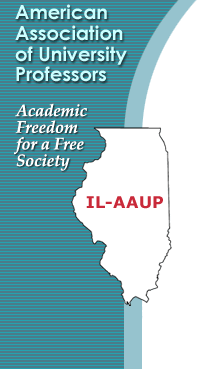 |
|
Tenure and Teaching-Intensive Appointments
The AAUP's latest report discusses a growing consensus: Institutions that employ teaching-intensive faculty should hire them and evaluate their teaching through the rigorous system of peer review known as the tenure system. As E. Gordon Gee, the United States's highest-paid university president puts it, campus employers must preserve "multiple ways to salvation" inside the tenure system—even at research-intensive institutions.
As the report notes, tenure was designed as a “big tent” to unite faculty of diverse interests and workplace priorities. It was not designed as a merit badge for research-intensive faculty or as a fence to exclude those with teaching-intensive commitments.
Before 1970, as today, most full-time faculty appointments were teaching-intensive. Nearly all full-time teaching-intensive positions were on the tenure track. Most faculty who spent most of their time teaching were also campus and professional citizens—with clear roles in shared governance and access to support for research or professional activity.
Today, campus employers have shunted the majority of teaching-intensive positions outside of the tenure system. This has in most cases meant a dramatic shift from “teaching-intensive” appointments to “teaching-only” appointments, featuring a faculty with attenuated relationships to campus and disciplinary peers.
This seismic shift from “teaching-intensive” faculty within the big tent of tenure to “teaching-only” faculty outside of it has a direct impact on student retention and achievement, as a growing body of evidence clearly demonstrates.
The central question we have to face in connection with this historic change is clear: Should more classroom teaching be done by faculty supported by the rigorous peer scrutiny of the tenure system? Most of the evidence says yes, and a host of diverse voices agree. This view brings together students, faculty, and legislators; the AAUP; and even many administrators.
In opposition to this trend, campuses across the country have taken bold steps to stabilize the crumbling faculty infrastructure. Concerned legislators and some academic administrators have joined faculty associations in calling for dramatic reductions in the reliance on contingent appointments, commonly urging a maximum of 25 percent.
Read the report, Tenure and Teaching-Intensive Appointments, which was approved by the Committee on Contingency and the Profession. Or visit the AAUP Web site to learn more about our work on contingent faculty appointments.
Mayra Besosa (Spanish),
California State University, San Marcos,
co-chair
Marc Bousquet (English),
Santa Clara University,
co-chair
AAUP Committee on Contingency and the Profession
|
|


